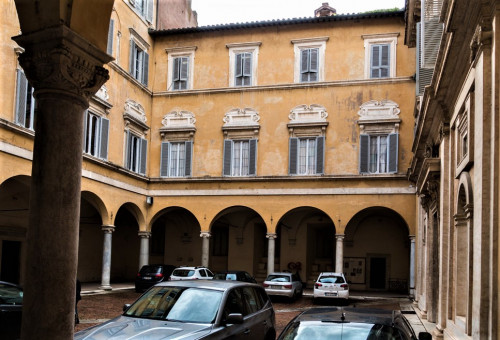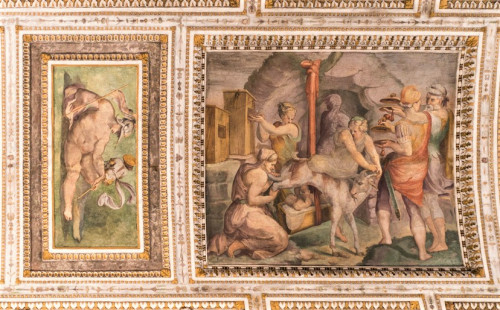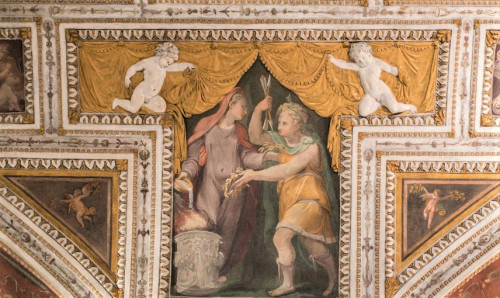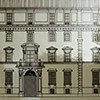
Palazzo Firenze, courtyard, view of the Loggia of Primaticcia

Palazzo Firenze, courtyard, view of the Loggia of Primaticcio

Palazzo Firenze, facade

Palazzo Firenze, courtyard

Palazzo Firenze, courtyard

Palazzo Firenze, entrance from the courtyard to the first floor

Palazzo Firenze, palace garden

Palazzo di Firenze, staircase of the palace

Palazzo di Firenze, the so-called Loggia del Primaticcio, decorations Prospero Fontana

Palazzo di Firenze, the so-called Loggia del Primaticcio, decorations Prospero Fontana

Palazzo Firenze, the so-called Loggia del Primaticcio, decorations Prospero Fontana

Palazzo di Firenze, the so-called Loggia del Primaticcio, decorations - Prospero Fontana

Palazzo Firenze, the so-called Loggia del Primaticcio, decorations Prospero Fontana

Palazzo di Firenze, the so-called Loggia del Primaticcio, decorations - Prospero Fontana

Palazzo di Firenze, the so-called Loggia del Primaticcio, decorations Prospero Fontana

Palazzo di Firenze, the so-called Loggia del Primaticcio, decorations Prospero Fontana

Palazzo di Firenze, the so-called Loggia del Primaticcio, decorations Prospero Fontana

Palazzo di Firenze, the so-called Loggia del Primaticcio, decorations Prospero Fontana

Studiolo (Sala delle Stagioni), a quadriga of the god the Sun and Aurora, Jacopo Zucchi, Palazzo Firenze

Studiolo (Sala delle Stagioni), allegory of winter Zimy, Jacopo Zucchi, Palazzo Firenze

Studiolo (Sala delle Stagioni), allegory of summer, Jacopo Zucchi, Palazzo Firenze
Today the palace is the home of the famous Società Dante Alighieri Institute, whose main aim is to promote the Italian language and culture. In previous centuries it was the residence of two prominent families, which wanted to mark their presence in the Eternal City in a special way. What was impossible to accomplish for one of them, the other attained without any great problems.
Today the palace is the home of the famous Società Dante Alighieri Institute, whose main aim is to promote the Italian language and culture. In previous centuries it was the residence of two prominent families, which wanted to mark their presence in the Eternal City in a special way. What was impossible to accomplish for one of them, the other attained without any great problems.
The story of this structure should be started with the pontificate of the ambitious pope, Julius III from the del Monte family. As soon as he became the successor of St. Peter in 1550, he rapidly began buying up properties in the developing district of Campo Marzio. The plans of his predecessor Paul III assumed the destruction of the houses found there, and the creation of a modern residential district. Julius bought three land plots, out of which one was occupied by the unfinished by its original owner, Jacopo Cardelli palace with a courtyard. The pontiff decided to bestow it with a new representative look, worthy of a family which he wanted to make wealthier and more secure as soon as possible. The palace was to be the residence of his brother and the papal nepot Baldovino del Monte. The reconstruction and expansion of the structure were entrusted to the architect Bartolomeo Ammannati. He was to give it harmonious shape, create an arcade courtyard and an elegant façade enriched with an imposing portal. In order to decorate the interiors, stucco artists and painters were employed including the outstanding Bolognese, Prospero Fontana. It was the intention of the del Monte family to build two additional palaces (for each member of the family), connect them with a garden, and in this way create a monumental residence, comparable with the one built by the Farnese family (Palazzo Farnese). If the pope had lived several years longer, most likely Rome would now have an imposing complex that would immortalize the del Monte family for centuries. However, this did not come to pass. The grand ambitions of Julius III were put to rest by a spectacular and violent fall from grace of the entire family.
However, before all this happened, the palace became more and more beautiful every day. The Loggia del Primaticcio found opposite the main entrance is excellent proof of just this. Its name comes from the surname of the famous XVI-century Florentine painter (Primaticcio), who was initially attributed with the creation of the frescos adorning the loggia. Later, it turned out that they were in fact completed by none other than Prospero Fontana. He covered the walls and the ceiling of the single-story interior with mythological scenes, which indirectly reference the two principal representatives of the del Monte family – Baldovino and Pope Julius III. The loggia is accessed directly from the courtyard, however, its windows face a small garden. Fontana also created the painting decorations of two other rooms – the so-called Camera del Duca and Camerino dei Continenti.

After the death of Julius III, his successor Pius IV confiscated the del Monte family estates accusing his predecessor of financing the construction of the residence with money from the papal treasury. As a consequence, the palace was taken over by the State of the Church, and rather quickly afterward (1561) found itself in the hands of the de 'Medici family becoming the residence of the Duke of Tuscany Cosimo I and in the future his son Giovanni, in whom the father saw a future pope. Giovanni at the age of sixteen became the titular cardinal of the Church of Santa Maria in Domnica, and then suddenly died. The duke sent another son to Rome, this time the fourteen-year-old – cardinal Ferdinando. Since that time the building was referred to as the Florentine Palace (Palazzo di Firenze).
As the young cardinal matured, he expressed greater and greater disdain towards his residence. He desired to reconstruct and embellish it, but most of all expand it since in his opinion in such a form it was unable to fulfill the demands of the representative role fit for the de’ Medicis in the Holy See. We know this from the letters which he wrote to his father, in which Ferdinand calculates, how much such a reconstruction would cost. The father gladly sent money for subsequent modernizations, and there were quite a few of them. Most likely the well-known architect Jacopo da Vignola participated in them. Another floor was added to the palace, where the private apartments of the cardinal were located. The courtyard was also reconstructed. The task of adorning the interiors was entrusted to Jacopo Zucchi, his, as it would later turn out trusted and favorite artist. He painted not only numerous easel paintings but also the paintings in the small chambers (studioli) in the palace itself. Two interiors from that time remain, which were decorated by his hand. The vault of the third one was taken apart and transported to Florence, at the time when Ferdinand bid farewell to his cardinalship. The remaining rooms are found on the second floor, and can still be admired today. One of these is the Hall of the Seasons (Sala delle Stagioni), the other the Hall of the Elements (Sala degli Elementi).

Before Ferdinando de Medici left for Florence, he felt quite at home in Rome and was one of the more interesting figures, active in the fields of art, culture, but also religious affairs. It was his idea to create the so-called Typographia Medicea, an institution specializing in printing religious works which were translated into various languages, and of which the goal was the conversion of the peoples of the Orient.
Palazzo di Firenze was not the only palace in Rome that belonged to the de' Medicis. The other was the Palazzo Madama. However, since 1576 the mind of the cardinal was occupied with the design of an extensive residence located on Pincio Hill, the so-called Villa Medici, where the expert art collector gathered valuable works of antique art. However, when in 1587 he received the news of the unexpected death of his brother Francesco the duke of Tuscany, the cardinal bid farewell to a career in the Church and a potential tiara, which the de' Medicis were counting upon and left Rome, taking with him a significant collection of ancient art. In the very same year, the palace was transformed into the residence of the ambassador of the Duchy of Tuscany.
In the following centuries, the Palazzo di Firenze belonged to the de Medici family, until Italy was united in 1870. Then the Ministry of Justice and Religious Affairs was housed there, while from 1926 it serves as the residence of the Dante Alighieri Society. Today it is possible to take part in language courses organized within its walls targeted at foreigners, watch films, or temporary exhibitions connected with the Italian language, and take part in meetings of the Society – particularly attractive due to their location – the beautiful Loggia Primaticcio.




















































